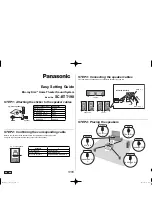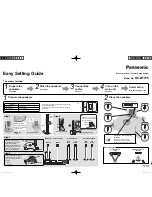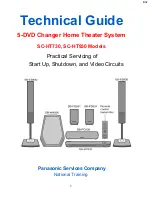
11
Pre-Electrical Checklist
√
Verify the voltage, frequency, and phase of the supply source
match the specifications on the unit rating plate.
√
Verify that the service provided by the utility is sufficient to
handle the additional load imposed by this equipment. See
(or the unit
rating label) for proper high voltage wiring requirements.
√
Verify factory wiring is in accordance with the unit wiring
diagram. See
. Make sure the
connections didn’t loosen during shipping or installation.
Grounding
WARNING:
The unit cabinet must have an uninterrupted or
unbroken electrical ground to minimize personal
injury if an electrical fault should occur. Do not use
gas piping as an electrical ground!
This unit must be electrically grounded in accordance with
local codes or, in the absence of local codes, with the National
Electrical Code (ANSI/NFPA 70) or the CSA C22.1 Electrical
Code. Grounding of the unit is accomplished by using the
grounding lug provided in the control box.
Line Voltage
• The line voltage to the unit should be supplied from a
dedicated branch circuit containing the correct fuse or circuit
breaker for the unit.
•
An electrical disconnect must be located within sight
of and readily accessible to the unit
. This switch shall be
capable of electrically de-energizing the outdoor unit. See
unit data label for proper incoming field wiring. Any other
wiring methods must be acceptable to authority having
jurisdiction.
• Use only copper wire for the line voltage power supply to
this unit as shown in
. Use proper code agency listed
conduit and a conduit connector for connecting the supply
wires to the unit. Use of rain tight conduit is recommended.
• Provide power supply for the unit in accordance with the
unit wiring diagram and the unit rating plate.
• Overcurrent protection must be provided at the branch circuit
distribution panel and sized as shown on the unit rating
label and according to applicable local codes. See
(or the unit rating plate) for minimum circuit ampacity and
maximum overcurrent protection limits.
• A wiring diagram is located on the inside cover of the control
access panel of the outdoor unit. The installer should become
familiar with the wiring diagram before making any electrical
connections to the outdoor unit. See
.
• Units are shipped from the factory wired for 230 volt
transformer operation.
• Connect the line-voltage leads to the terminals on the
contactor inside the control compartment.
Thermostat / Low Voltage Connections
• This unit is designed to operate from a 24 VAC Class II
control circuit. A single stage cooling / single stage heating
thermostat should be used with this unit. A 2-stage cooling /
2-stage heating thermostat is recommended for economizer
operation. See
for typical thermostat
connection.
• The control circuit wiring must comply with the current
provisions of the NEC (ANSI/NFPA 70) and with applicable
local codes having jurisdiction. Thermostat connections
should be made in accordance with the instructions supplied
with the thermostat and the indoor equipment.
• The low voltage wires must be properly connected. Route
24V control wires through the sealing grommet near the
power entrance.
• Several thermostat options are available depending on the
accessories installed with the unit. Select a thermostat that
operates in conjunction with the installed accessories.
• The thermostat should be mounted about 5 feet above the
floor on an inside wall. DO NOT install the thermostat on
an outside wall or any other location where its operation
may be adversely affected by radiant heat from fireplaces,
sunlight, or lighting fixtures, and convective heat from warm
air registers or electrical appliances. Refer to the thermostat
manufacturer’s instruction sheet for detailed mounting
information.
Checking Heat Anticipator Settings
• Add the current draw of the system heating components.
OR
• Measure the current flow on the thermostat
R
-
W
circuit
after the circulating blower motor has started. Set the heat
anticipator according to the thermostat manufacturer’s
instructions for heat anticipator settings.
COPPER WIRE SIZE — AWG
(1% VOLTAGE DROP)
SUPPLY WIRE LENGTH-FEET
SUPPLY CIRCUIT
AMPACITY
200
150
100
50
6
8
10
14
15
4
6
8
12
20
4
6
8
10
25
4
4
6
10
30
3
4
6
8
35
3
4
6
8
40
2
3
4
6
45
2
3
4
6
50
2
3
4
6
55
1
2
3
4
60
NOTE:
Wire Size based on N.E.C. for 60° type copper conductors.
Table 2. Copper Wire Size
Figure 6. Typical Thermostat Connection
(Field Supplied) for 1-Stage Cool / 1-Stage Heat
C
Y1
R
G
W1
R
C
Y
G
W1
Y2
TERMINAL BLOCK
FURNACE
BOARD
Optional, Refer to
Thermostat Instructions
INDOOR THERMOSTAT
SUB-BASE (TYPICAL)
A1












































